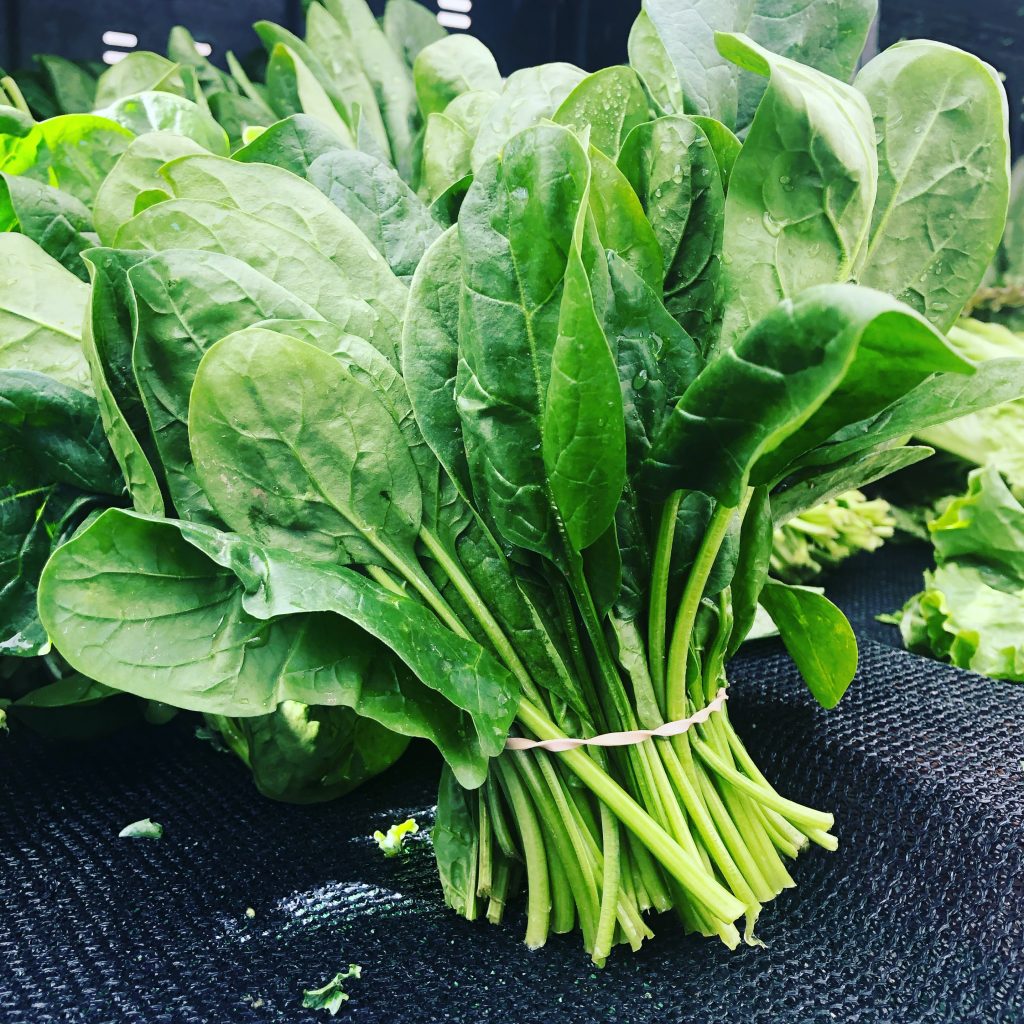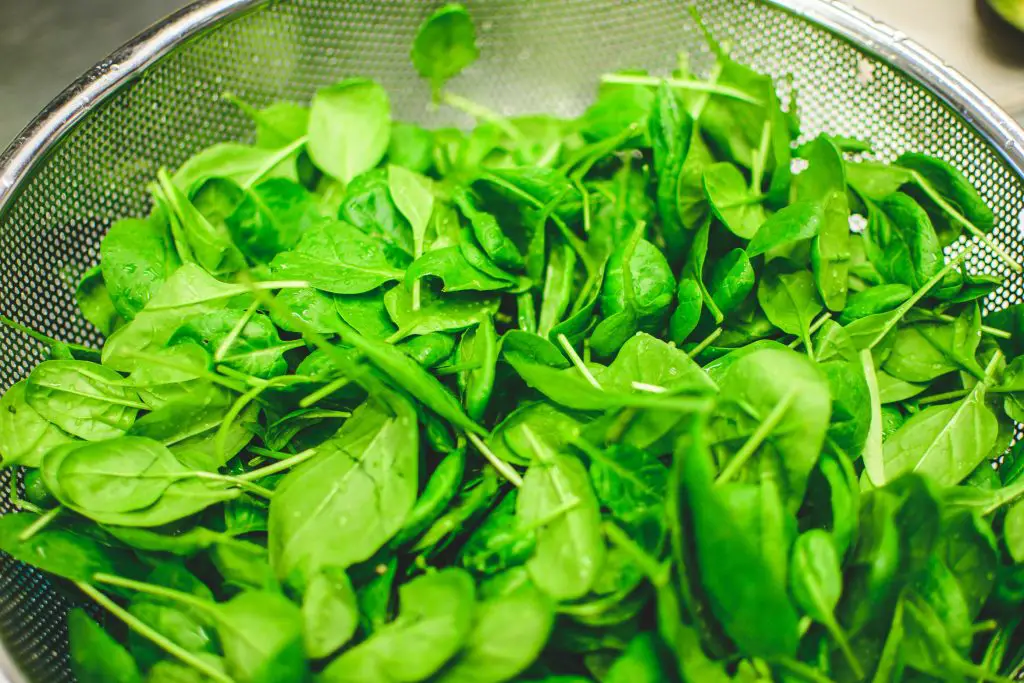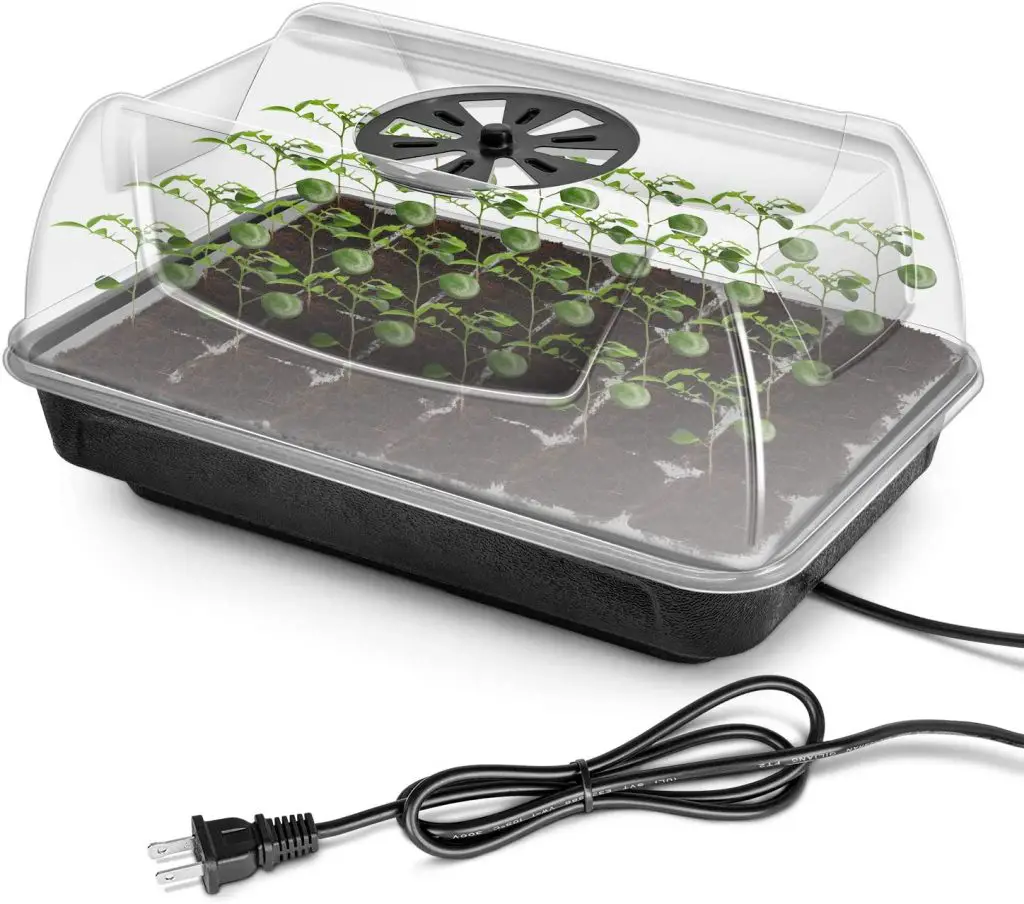How Long Does It Take Spinach Seeds To Germinate? How Does Temperature Effect It? Spinach is a relatively popular leafy green in the cooler months of the year when there are limited other crops available. If you are growing them at home one of the most common questions that is asked is how long does it take for spinach seeds to germinate?
Spinach will take approximately 5 to 12 days to germinate at temperatures of 50°F to 86°F (10 to 30°C) according to a study published by the University of California. However, below 50°F (10°C) the rate of germination reduces significantly, and above 86°F (30°C) the seeds will not germinate. A table showing the speed of germination is provided below for reference.
| Days To Germinate | Temperature (°F) | Temperature (°C) |
| 62.6 | 32 | 0 |
| 22.5 | 41 | 5 |
| 11.7 | 50 | 10 |
| 6.9 | 59 | 15 |
| 5.7 | 68 | 20 |
| 5.1 | 77 | 25 |
| 6.4 | 86 | 30 |
| – | 95 | 35 |
| – | 104 | 40 |
Spinach is a vegetable that prefers cooler weather and is generally grown in autumn and spring when the temperatures are lower. The reason for this is that spinach has a high tendency to bolt in warmer weather which means you cannot get a reasonable cop out of it in the warmer months.
As a result, it is recommended that sowing seeds be carried out in late winter or early spring and also in late summer for an autumn harvest. As seeds of spinach are relatively large it is possible to plant them directly into the garden, however, I generally recommend that you grow spinach in the seed tray.

The main reason for this is because it is easier to control the conditions in which seeds are grown in a tray and additionally it reduces the amount of time that the plants spend in the garden which creates space for other things to be grown which is particularly important in as the weather warms up.
However, it is important to note that while spinach does prefer cooler temperatures its still does require a reasonable temperature in which to grow so if you live in a relatively cool environment it is best to keep the seed tray inside in the early part of spring to ensure that the plant gets going relatively quickly.
This can be aided if you have a heated propagation tray which is particularly useful for getting heat-loving crops going in winter. The heated propagation trays are generally more reliable in terms of temperature control than simply placing a tray and indoors and it will generally give you a much better result.
If you are considering purchasing one we recommend that you select a product that has a removable seed tray and a humidity dome. The reason for this is because the seed tray is typically the part of the unit that deteriorates first so being able to replace it will extend the life of the unit substantially.
The humidity dome is useful because it helps to keep the heat in and control the level of humidity around the seedlings eensuring that they have the optimum growing conditions. To check the latest price on Amazon click on the link below.
How To Grow Spinach
As mentioned above we recommend that you sow seeds into a modular seed tray that contains a good quality seed raising mix. The seed raising mix should be firmed into each cell to form plugs which will make it easier to transplant the seedlings later on
As the seeds are relatively large they can be planted at a depth of approximately half an inch. Ideally, we recommend planting between 2 and 4 seeds per cell to ensure that you have a clump of seedlings to plant out into the garden. The seed tray can then be stored in a moderately warm location to protect the seeds from the worst of the weather.
As spinach seedlings do take a while to grow they typically need to spend 6 to 8 weeks in the seed tray before their large enough to be planted out into the garden, however, this will depend greatly upon the specific climatic conditions.
Planting Seedlings Into The Garden
Once the seedlings are large enough to plant in the garden they can be planted in either full sun or shady conditions. However, in shady conditions, the seedlings will grow significantly slower, but this can be advantageous for summer plantings when you want to shield the seedlings from relatively warm conditions.
In terms of soil conditions, spinach seedlings, like most vegetables prefer rich, moist, and free-draining soil with plenty of nutrients. They particularly require large amounts of nitrogen to ensure that they perform at their best. This can be supplied either through adding organic compost to the soil or pelletized manure which will increase the nitrogen content.
Like most leafy greens spinach seedlings are highly susceptible to attack from slugs and snails and therefore need to be protected. This can be done either by using chemical or physical barriers such as applying snail bait or using a cloche to provide a physical barrier.

In terms of the timing of planting spinach, seedlings are resistant to frosts and therefore can be planted out even before the first frost of the year but they will benefit from having a cloche over the top of them if the daytime temperatures are relatively low.
To maximize the output of spinach plants it is important to ensure that they get adequate moisture and are inspected regularly for any damage. The spinach leaves can be picked at any stage provided they are sufficiently large.
However, the most tender leaves are ones that are youngest in age, the older leaves can become a little bit tough if they’re left too long on the plant. The plants can be continually harvested until either the weather gets too cold or too hot depending upon the time of the year.
I hope you found this article useful and have great success growing your spinach at home, if you have any additional comments or questions please leave them in the section below.
Relevant Articles
Chard Vs Spinach: Are They The Same Thing?
Are Arugula And Spinach The Same Thing? What Is The Difference?
How Much Does A Spinach Plant Yield?

